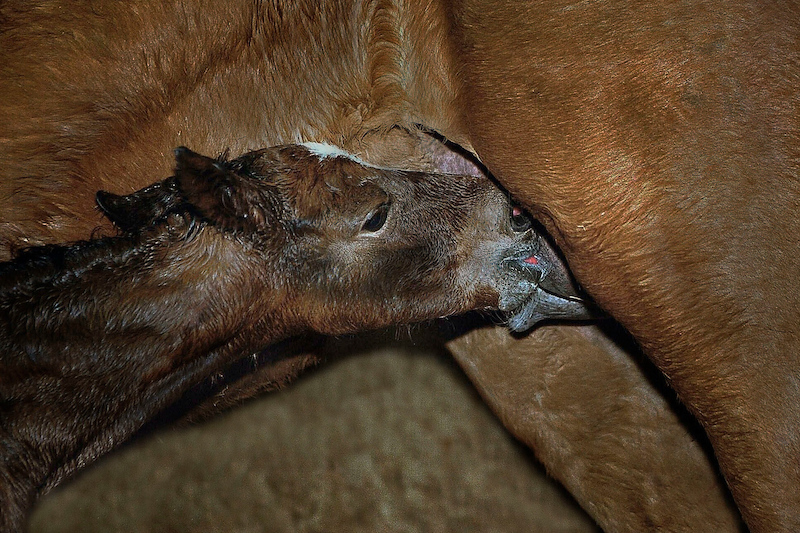New-born foal: When to call the vet during the birth of a foal
For many mare owners, an exciting time: the birth of their foal(s). For most mares, the delivery goes without any problems and the owner does not have to do anything. But sometimes unexpected situations arise, and help is needed, whether or not from a vet. When is a delivery still normal and how do you recognise an undesirable situation? And when should you decide to call the vet? "The first phase of the birth, the opening of the cervix and the turning of the foal can take a few hours. If the mare then starts to push hard and no progress is observed for 15 minutes, a vet should be called.
After the water is broken, the amniotic sac with the foal’s front feet should become visible after about fifteen minutes. If this is not the case, contact your vet. The same applies if a red, velvety sac becomes visible. We call this a 'red bag delivery'; this is a sign that the placenta has come loose. This is one of the biggest emergencies during the birth of a foal. Because when the placenta comes loose, the foal can no longer get any oxygen. The veterinarian should be called but waiting until he/she arrives can take too long. In consultation with and under guidance of the vet (possibly by phone), the foal should be delivered urgently."
The breaking of the water is the clearest sign that the delivery has really started. Because this process occurs quietly, it is often not noticed. "Many mares start to push immediately after the breaking of the water and this pushing should not take too long. It must really progress. If nothing has happened after 15 minutes, it can be problematic." With the amniotic sac, one hoof comes first and about fifteen centimeters away the second. "Very important is that you look at the top of the hoofs; you have to see the top of the hoofs and not the hoof balls. That can indicate a breech presentation or a foal that has not turned yet. The vet will then have to come and turn the foal. It is also possible that only one foot comes out. In that case, it is important to wash your hands and both arms thoroughly and to clean them with chlorhexidine and to carefully feel the other foot with a little lubricant. In such a case it is advisable to call your vet; it could be that the foal is stuck on an elbow or is completely in the shoulder position. Also, when the nose comes first or when the umbilical cord is wrapped around a foot, for example, you should contact your vet. In case of a deviant position your vet will give you instructions by phone to reduce the contractions temporarily; this can be done by getting the mare on her feet and walking a bit."
What to do during the foal's delivery? You will read it next week!
Photo: Dirk Caremans























 KWPN Database
KWPN Database KWPN.tv
KWPN.tv KWPN Horses for Sale
KWPN Horses for Sale